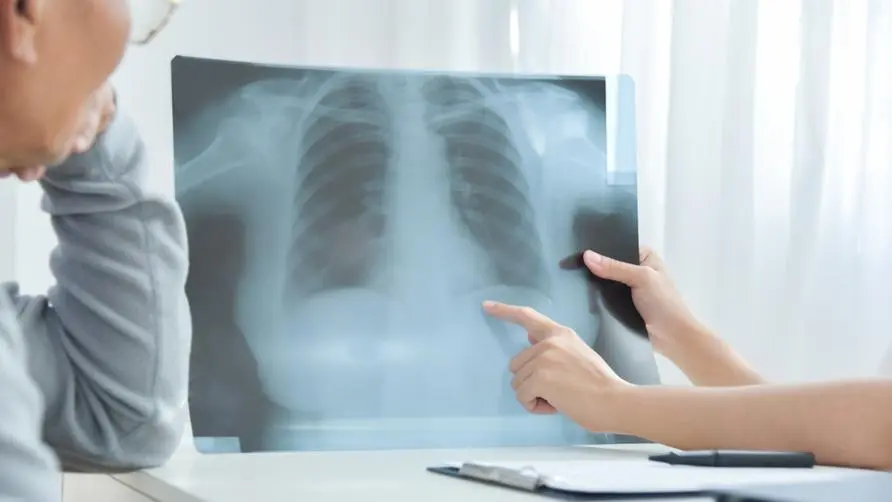Mild and asymptomatic people also suffer! Doctor reveals: Diagnosed patients may have "two major abnormalities" in their lungs

COVID-19 has affected the world for two and a half years. Even so, the mechanism of COVID-19’s impact on the human body has yet to be determined. Dr. Cai Zhelong from the Thoracic Department of Lian An Clinic explained that the impact of COVID-19 is not only an upper respiratory tract infection. Once the virus penetrates deep into the body, it may affect the lungs, cardiovascular system, brain, digestive system, genitourinary system, and skin.
Are mild and asymptomatic cases also affected? COVID-19 causes “two major abnormalities” in the lungs
Dr. Cai Zhelong emphasized that overall, COVID-19 is a systemic disease, and because there are more ACE2 receptors in the alveoli of the lungs, it can easily cause various lung diseases or respiratory symptoms. Clinically, there are many people who still have COVID-19 problems such as difficulty breathing and coughing after getting better from the epidemic. Moderate to severe COVID-19 patients will have varying degrees of pneumonia and need to be followed up with chest X-rays or lung CT scans. Therefore, there will be more obvious COVID-19 problems in the respiratory system after being infected.
If you are an asymptomatic or mild patient after contracting the epidemic, does it mean there will be no impact? Dr. Cai Zhelong believes that this is not necessarily the case. Even if there are no abnormalities in chest X-rays and lung function tests, research reports show that high-resolution computed tomography (HRCT) is still very high in people with COVID-19 who are asymptomatic or have mild symptoms and have respiratory systems. There are ground glass lesions or Small Airway Disease (SAD).
Dr. Cai Zhelong said that although ground glass lesions may gradually disappear, long-term research is needed to understand whether the respiratory discomfort caused by airway trapping in small respiratory diseases can be improved through treatment.
People with lung disease are at high risk of becoming seriously ill after contracting the epidemic! Lung cancer screening is recommended for those over 40 years old
Dr. Cai Zhelong said that the Omicron virus strain has strong immune escape. Even if the current vaccine protection is reduced, the vaccine can reduce severe illness and death, and the symptoms of COVID-19 after infection are also mild. We hope that a new generation of vaccines will be available soon. Currently, the Taiwan Ministry of Health and Welfare’s Advisory Committee on Infectious Disease Control and Prevention (ACIP) recommends that high-risk groups receive a second booster dose (the fourth dose of vaccine).
In addition, lung cancer is the second most common cancer in Taiwan and has the highest mortality rate. It is recommended that people over 40 years old should consider low-radiation dose computed tomography (LDCT) to screen for lung cancer. For those who have obvious symptoms of COVID-19 in their respiratory system after being infected, they should go to a medical institution for follow-up treatment; after recovery of asymptomatic or mildly infected people, if there are no obvious symptoms of COVID-19, it is recommended to arrange for low-care treatment three months after being infected. Radiation dose computed tomography to reduce imaging of ground-glass lesions that may be caused by inflammation from infection.
Is there still time to wait before COVID-19 becomes “influenza”? Doctors teach 4 tricks to combat sequelae
Dr. Cai Zhelong pointed out that it may take several years for the new coronavirus to become influenza-like. The long-term symptoms of COVID-19 after infection are bound to affect hundreds of millions of confirmed cases around the world. If you want to improve the sequelae of COVID-19 through diet, you can start with the following 4 items:
It is recommended to take vitamin D, probiotics and other health foods to adjust immunity.
Take vitamins A, C, and E. Through functional medicine testing such as antioxidant vitamin analysis, you can understand the vitamin content and understand whether your own antioxidant function is sufficient.
Eat good fats and oils, including monounsaturated fatty acids such as Omega-9 and polyunsaturated fatty acids such as Omega-3 and Omega-6. You can know whether your body is in a state of high inflammation through the detection of inflammation reference indicator: high-sensitivity C-reactive protein (HS-CRP).
After being infected with the epidemic, you should be symptom-free for at least 7 days before gradually increasing the amount of exercise. If you feel unwell during exercise, be sure to consult a thoracic surgeon or cardiologist for evaluation.
Further reading:





